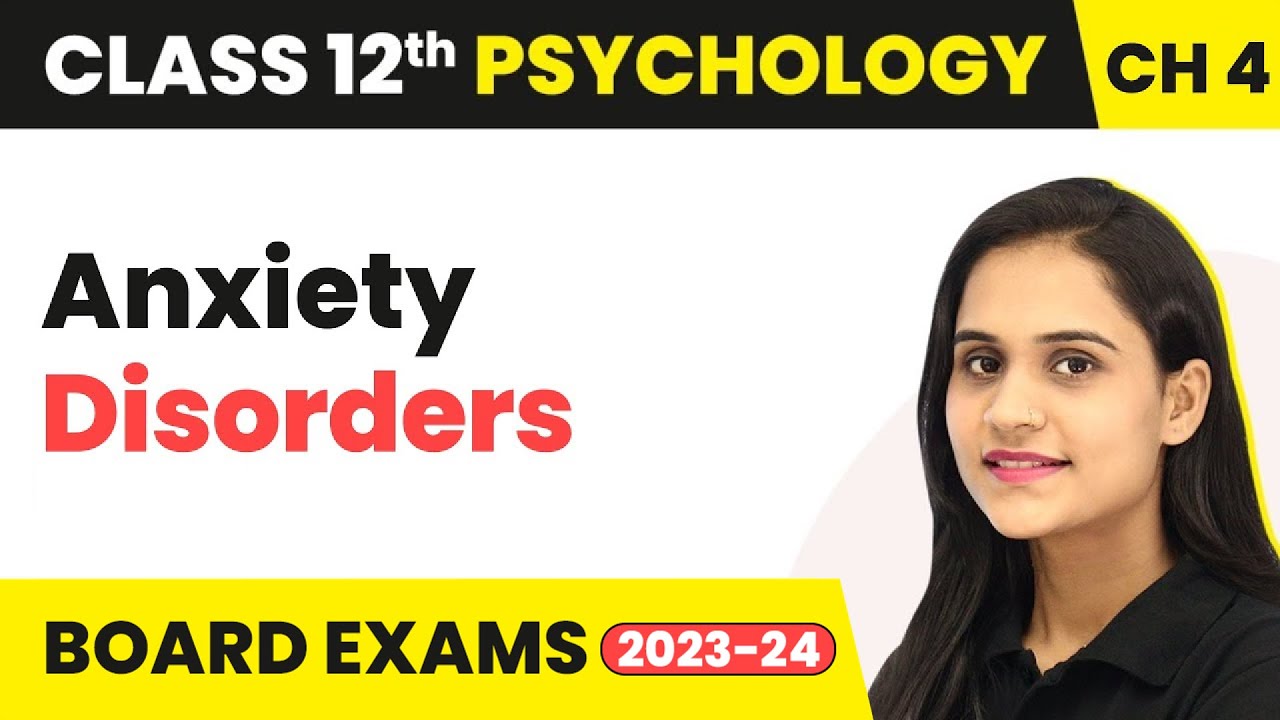Module 3.Anxiety Disorders.V2
Summary
TLDRThis video script explores several anxiety-related disorders, including panic disorder, phobias, OCD, and generalized anxiety disorder. It explains the distinct symptoms and impacts of each condition, such as the recurrent, unpredictable panic attacks in panic disorder, the irrational and extreme avoidance behaviors in phobias, and the intrusive thoughts and repetitive behaviors seen in OCD. The script also covers generalized anxiety disorder, characterized by excessive, uncontrollable worry. The aim is to differentiate these conditions while highlighting their effect on daily life, relationships, and overall well-being.
Takeaways
- 😀 Panic disorder is characterized by recurrent and unexpected panic attacks that occur without a specific trigger, making them difficult to predict or prevent.
- 😀 A panic attack involves intense fear or discomfort, often accompanied by physical symptoms like shortness of breath, chest pain, and feelings of impending doom.
- 😀 Panic attacks can be mistaken for heart attacks due to similar symptoms, such as chest pain and shortness of breath.
- 😀 Agoraphobia is commonly associated with panic disorder, where individuals avoid situations where escape may be difficult or help unavailable during a panic attack.
- 😀 Phobias are persistent, irrational fears of specific objects, activities, or situations, and they lead to avoidance behaviors that interfere with daily life.
- 😀 There are three main types of phobias: agoraphobia (fear of difficult-to-escape places), social phobia (fear of embarrassment or criticism), and specific phobia (fear of specific objects or situations like flying).
- 😀 OCD is characterized by obsessive thoughts (intrusive and irrational) and compulsive behaviors (repetitive actions), which the person feels driven to perform to reduce anxiety.
- 😀 Compulsions in OCD are not simply habits, but are driven by distressing and irrational thoughts, such as fears of contamination or harm.
- 😀 OCD affects daily life significantly, with rituals and compulsions consuming large amounts of time, leading to difficulty functioning at work or in relationships.
- 😀 Generalized anxiety disorder (GAD) involves excessive, uncontrollable worry that impacts daily functioning, often without the presence of panic attacks or obsessions.
- 😀 Unlike panic attacks, GAD causes symptoms like restlessness, fatigue, difficulty concentrating, and sleep disturbances, without the same level of acute fear or distress.
Q & A
What is a panic disorder?
-A panic disorder is characterized by recurrent and unexpected panic attacks that cannot be explained by any medical condition. These attacks happen suddenly and spontaneously, often with no specific trigger.
What are the common symptoms experienced during a panic attack?
-During a panic attack, individuals may experience extreme fear, shortness of breath, chest pain, dizziness, a reduced peripheral vision, and a sense of impending doom. These symptoms can sometimes be mistaken for a heart attack.
How can agoraphobia be linked to panic disorder?
-Agoraphobia is often seen in people with panic disorder. It involves avoiding situations or places where escape may be difficult or where help may not be available during a panic attack, such as crowded areas or unfamiliar environments.
What distinguishes a phobia from normal fear?
-A phobia is an irrational and persistent fear of a specific object, activity, or situation that causes significant avoidance behavior and interferes with daily life. Unlike normal fear, which may be temporary and manageable, phobias create ongoing distress.
What are the three types of phobias mentioned?
-The three types of phobias are agoraphobia (fear of places where escape might be difficult), social phobia (fear of being judged or embarrassed in social situations), and specific phobia (fear of a particular object, activity, or situation, like fear of flying).
What is the key difference between normal anxiety and a panic attack?
-A panic attack involves an intense, sudden onset of fear or discomfort, often without an obvious cause, and includes multiple physical symptoms. Normal anxiety, such as being nervous before a presentation, typically involves fewer symptoms and resolves quickly.
How does obsessive-compulsive disorder (OCD) manifest?
-OCD is characterized by intrusive, repetitive thoughts (obsessions) and the need to perform repetitive behaviors (compulsions) to reduce anxiety. These compulsions, like washing hands repeatedly, are driven by the underlying intrusive thoughts.
What is the significance of compulsions in OCD?
-Compulsions in OCD are not just actions; they are performed to alleviate the distress caused by obsessive thoughts. For example, a person may repeatedly check locks due to a fear of something bad happening if they don't.
How does generalized anxiety disorder (GAD) differ from panic disorder and OCD?
-GAD is characterized by excessive and uncontrollable worry about various aspects of life, without the intense panic attacks or specific compulsive behaviors seen in panic disorder or OCD. It often includes symptoms like restlessness, fatigue, and sleep disturbances.
Can a person experience both a phobia and a panic attack?
-Yes, a person with a phobia can experience panic attacks when exposed to the object or situation that triggers their fear. This is common in specific phobias, like fear of flying or heights, where even thinking about the situation may cause panic symptoms.
Outlines

此内容仅限付费用户访问。 请升级后访问。
立即升级Mindmap

此内容仅限付费用户访问。 请升级后访问。
立即升级Keywords

此内容仅限付费用户访问。 请升级后访问。
立即升级Highlights

此内容仅限付费用户访问。 请升级后访问。
立即升级Transcripts

此内容仅限付费用户访问。 请升级后访问。
立即升级浏览更多相关视频

Every Type of ANXIETY Explained in 9 Minutes

Anxiety Disorders (Intro Psych Tutorial #228)

OCD and Anxiety Disorders: Crash Course Psychology #29

Anxiety Disorder: Different Types, Symptoms, and Treatment Options | Mass General Brigham

Anxiety Disorders - Psychological Disorders | Class 12 Psychology Chapter 4

Anxiety Disorders Mnemonics (Memorable Psychiatry Lecture)
5.0 / 5 (0 votes)
